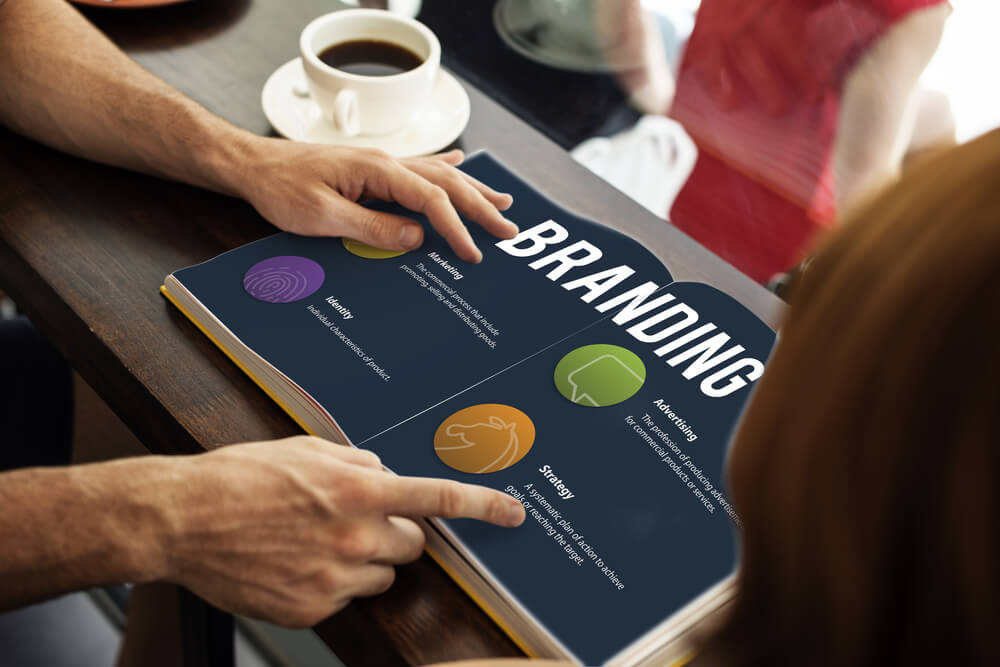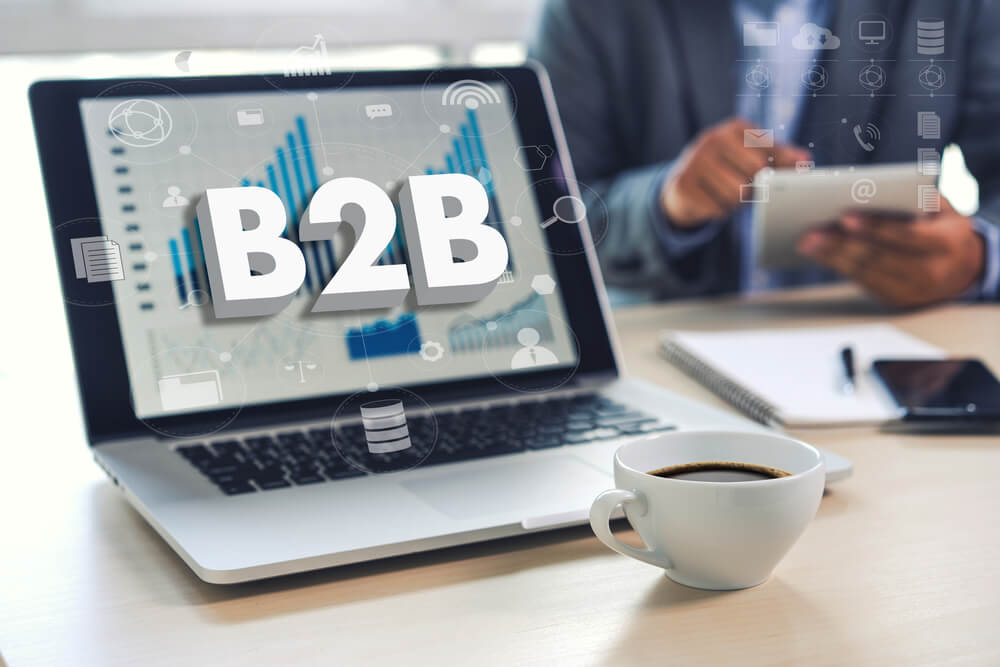
5 Multi-Channel B2B Branding Tips: A Path to Digital Excellence
The business-to-business (B2B) industry is going through a massive digital transformation focused on inbound strategies, valuable content, and tailored customer experiences. Are you ready to adapt and compete?
The article delves into five tips to launch and manage multi-channel B2B branding for digital growth:
- Craft a cohesive multi-channel brand strategy.
- Use social media for branding success.
- Optimize email marketing for B2B engagement.
- Embrace video content.
- Implement search engine optimization (SEO) best practices.
Learn about these tips and empower your business in this digital age. Let’s go!
Tired of investing in Search Engine Optimization without getting any results? See how Digital Authority Partners turns that around!
5 Tips for Multi-channel B2B Branding

Multi-channel marketing uses various channels to connect with customers and drive conversions by reaching them through their preferred medium. It suggests that you need to diversify your outreach efforts across multiple platforms to attract and capture high-value B2B customers who are now everywhere.
Establishing an effective presence across multiple touchpoints is critical for successful engagement. However, it requires a solid branding strategy and skillfully created tailored messaging and experiences that resonate with the target audience.
Create a solid multi-channel B2B brand with these tips:
1. Craft a Cohesive Multi-channel Brand Strategy
Developing a unified multi-channel brand strategy for your B2B market involves:
- Aligning branding efforts across various channels.
- Integrating offline and online channels.
Whether it is social media, email marketing, website content, paid advertising, or offline events and print collateral, maintaining a cohesive brand message and visual identity fosters recognition, familiarity, and trust among the target audience.
Consistency also reinforces clarity about what the brand stands for in the customer’s mind. Conveying aligned messaging and aesthetics throughout the customer journey helps shape their perception. In addition, the seamless integration of branding elements across channels contributes to a memorable customer experience that amplifies the overall impact of marketing efforts.
However, consistency does not mean rigid uniformity. Brands must still customize the look, feel, and messaging to fit each channel’s unique interface and expectations. Consistent branding triggers familiar cues that make customers feel at home with the brand, leading to continued engagement across channels.
Consistency combines offline and online branding strategies to create a holistic customer experience. It also enhances brand visibility but maximizes the benefits offline advertising provides.
These include deeper audience engagement through personalized interactions, the ability to demonstrate products and services directly, and opportunities to build relationships and trust through face-to-face conversations.
Overall, synchronizing multi-channel strategies maximize your reach, engage diverse audiences, and establish a more robust B2B brand presence in a competitive market.
2. Use Social Media
Social media is a highly efficient tool for brand building, audience communication, and lead generation. It raises brand awareness and drives both paid and organic website traffic.
With a global user base exceeding 4.55 billion, social media platforms such as Facebook, Instagram, and Twitter present significant possibilities for brands to connect with their existing and prospective customer base.
The strategic use of social media also allows you to craft messages that resonate, evoke emotions, and cultivate a stronger connection with the audience. This transforms your brand into an accessible and relatable resource, encouraging potential clients to engage with and revisit your business.
Use social media channels effectively with these tips:
- Choose the most relevant B2B social media platform.
- Create engaging and value-driven content.
Understanding where your audience is most active allows you to efficiently customize the messaging and content. For example, LinkedIn posts are usually more comprehensive and business-sounding because they are professional networks. On the other hand, X (formerly Twitter) is best for micro-posts, such as real-time updates.
The best social media content is insightful and relevant, addressing the challenges and interests of their B2B audience. Examples include:
- Educational posts that provide actionable tips to solve common pain points.
- Behind-the-scenes footage showcasing company culture and values.
- Links to helpful third-party resources such as reports, podcasts, and webinars.
- Product updates and announcements catered specifically to customers.
Consistently delivering valuable content establishes you as an industry leader and fosters trust and credibility online.
3. Optimize Email Marketing
Email marketing is a crucial channel for multi-channel strategies. Most B2B buyers maintain a professional email ID that they frequently check. Targeted and personalized emails that provide value effectively engage customers despite overflowing inboxes.
Most of all, customized newsletters, promotional mailers, and one-to-one conversations over email allow you to nurture leads, drive conversions, upsell products, and encourage loyalty.
Optimize email marketing for B2B engagement with these ideas:
- Personalize email campaigns.
- Leverage automation for targeted communication.
Personalization is key to enhancing B2B engagement through email marketing. Matching the content and messaging to your clients’ specific needs and preferences helps build a more meaningful, deeper relationship that improves revenue, retention, and customer lifetime value.
Emails based on industry, job roles, and previous interactions resonate well with recipients, increasing the content’s relevance and value.
Meanwhile, automation plays a huge role in optimizing B2B email marketing for the following reasons:
- Enabling targeted and timely communication.
- Automating workflow to streamline trigger responses based on user behavior.
- Delivering the right content at the right time.
Automation makes nurturing leads, providing relevant information, and guiding B2B clients through the buyer’s journey easier and more cost-effective.
At its core, email optimization is a win-win. Customers get more valuable, targeted information that enhances user experience and improves branding. You gain loyal customers and increase sales.
4. Embrace Video Content
As social media becomes more popular, more people use mobile devices, and the attention span shortens, integrating video into your multi-channel marketing approach is vital. It does the following:
- Demonstrates products and services dynamically.
- Conveys brand stories and values visually.
- Explains complex information clearly through animation.
- Engages audiences with interviews of leaders and experts.
- Spreads brand messaging widely through social video ads.
Many types of videos can support your content strategy. The table below provides three:
| Type of Video | Benefits |
|---|---|
| Instructional | - Showcases products or explains services. - Aids sales and marketing teams in effective customer communication. - Enhances customer experience, builds trust, and boosts sales. |
| Explainer | - Simplifies complex ideas concisely and engagingly. - Addresses pain points, offers solutions, and highlights key benefits. - Nurtures leads, educates prospects, and expedites decision-making. |
| Brand | - Shapes company identity. - Showcases values, culture, and unique selling propositions. - Contributes to brand awareness, customer loyalty, and successful advertising. |
Embrace video content for B2B engagement by doing these:
- Leverage video content as a dynamic and engaging medium that captures attention more effectively than traditional methods.
- Use videos in email campaigns, social media, and other channels to convey messages in a compelling way.
- Create a more immersive and visually appealing experience for the B2B audience.
- Present complex ideas, product demonstrations, and expert insights in a digestible and engaging format.
- Incorporate videos to effectively communicate your expertise and solutions.
5. Implement Search Engine Optimization (SEO) Best Practices
Search engine optimization (SEO) improves a website’s visibility and ranking on search engine results pages (SERPs). The higher your website ranks on the SERPs, the greater the likelihood users will click on it, driving organic traffic.
How do you implement SEO as part of your multi-channel marketing strategy? Consider these tips:
- Identify keywords that target high-value decision-makers and influence buying committees for complex B2B solutions.
- Optimize multi-channel content for nuanced terminology and research patterns specific to each B2B niche.
- Develop in-depth content aligned with sophisticated buyer journeys.
- Implement technical SEO strategies for seamless lead nurturing and access to gated B2B content.
- Use backlinks from industry publications, forums, and influencers to establish thought leadership in B2B domains.
- Regularly refine keyword targeting strategies and align them with evolving buyer personas and journeys.
- Monitor ranking in your industry to quantify channel performance. Optimize to accelerate conversion.
Summing Up
B2B brands that work on improving their digital footprint benefit from widened market share and better industry authority. Foster business success in the B2B space by embracing a comprehensive digital strategy that unifies multi-channel marketing with branding for digital excellence.
Align visual identity and messaging across platforms to convey a consistent brand that establishes credibility and trust. Diversify owned, earned, and paid channels to engage decision-makers throughout complex buyer journeys.
Optimize all digital properties and campaigns, monitor channel metrics rigorously to double down on platforms demonstrating traction, and stay nimble to adapt branding and content strategies with shifting B2B markets.
Do you need help in multi-channel B2B branding? Work with an award-winning digital marketing agency. Contact Digital Authority Partners (DAP) today to schedule a free consultation.
Want To Meet Our Expert Team?
Book a meeting directly here




